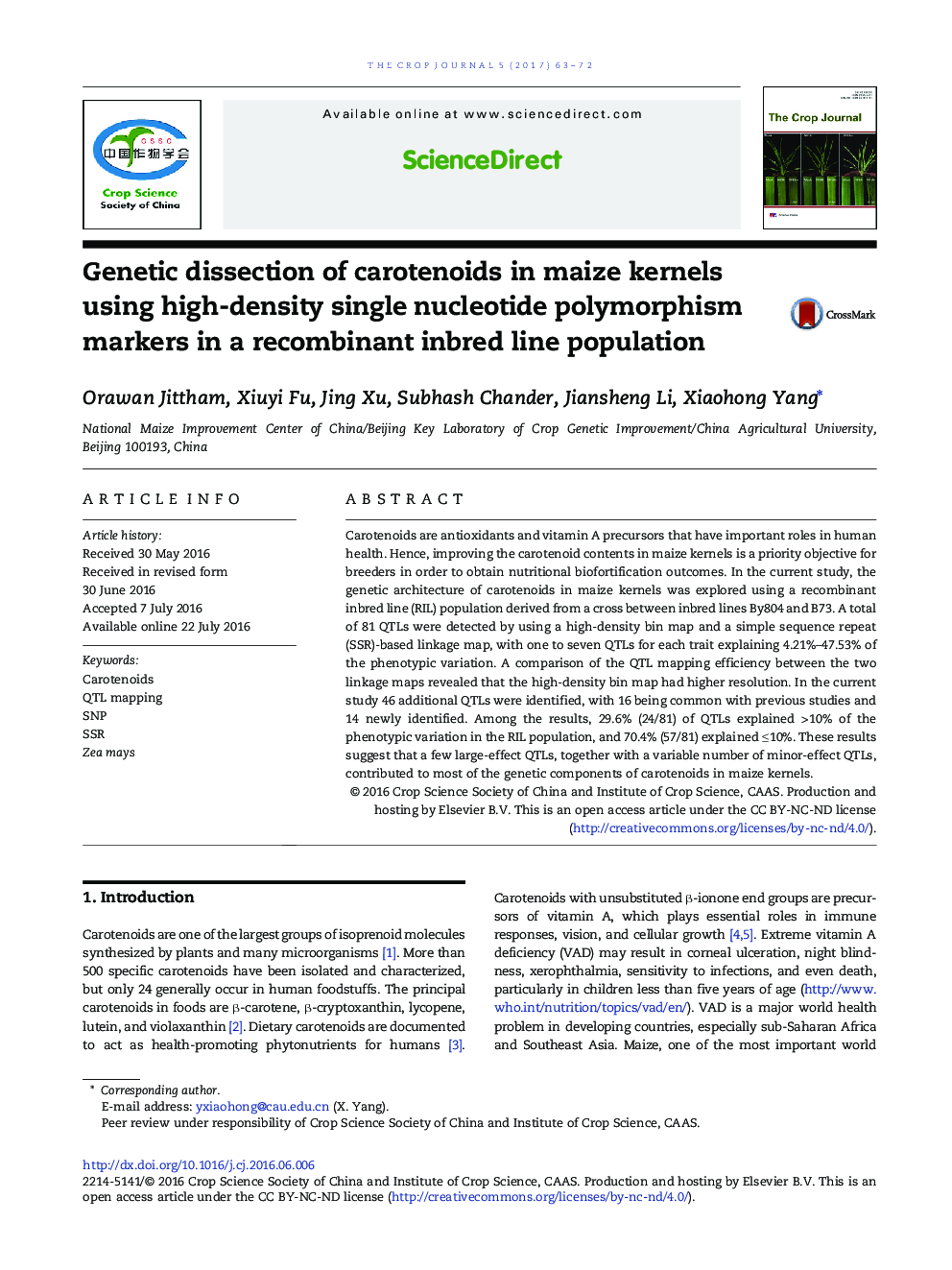| Article ID | Journal | Published Year | Pages | File Type |
|---|---|---|---|---|
| 5520846 | The Crop Journal | 2017 | 10 Pages |
Carotenoids are antioxidants and vitamin A precursors that have important roles in human health. Hence, improving the carotenoid contents in maize kernels is a priority objective for breeders in order to obtain nutritional biofortification outcomes. In the current study, the genetic architecture of carotenoids in maize kernels was explored using a recombinant inbred line (RIL) population derived from a cross between inbred lines By804 and B73. A total of 81 QTLs were detected by using a high-density bin map and a simple sequence repeat (SSR)-based linkage map, with one to seven QTLs for each trait explaining 4.21%-47.53% of the phenotypic variation. A comparison of the QTL mapping efficiency between the two linkage maps revealed that the high-density bin map had higher resolution. In the current study 46 additional QTLs were identified, with 16 being common with previous studies and 14 newly identified. Among the results, 29.6% (24/81) of QTLs explained > 10% of the phenotypic variation in the RIL population, and 70.4% (57/81) explained â¤Â 10%. These results suggest that a few large-effect QTLs, together with a variable number of minor-effect QTLs, contributed to most of the genetic components of carotenoids in maize kernels.
